Complete Solutions to Cell - The Unit Of Life of chapter CELL - THE UNIT OF LIFE of Class 11 book with complete answers and questions
| Class 11 | BIOLOGY |
| Chapter | CELL - THE UNIT OF LIFE |
| NCERT FINGERTIPS | Cell - The Unit Of Life |
| Number Of Questions | 100 |
| Academic Year | 2023-24 |
Unicellular microscopic organisms were first studied by
01:07View SolutionThe most likely method, used to determine the structural details of a cell organelle is
04:06View SolutionThe figures of cork cells as seen by Robert Hooke were published in the book
01:08View SolutionCell theory was formulated by
00:51View SolutionOmnis cellula-e cellula' i.e., new cells arise from prexisting cells , this statement was given by
01:05View SolutionMatch column I with column II and select the correct option from the codes given below.
`{:(,"Column I",,"Column II"),(A.,"Leeuwenhoek",(i),"First saw and described a living cell"),(B.,"Robert Brown",(ii),"Presence of cell wall is unique to plant cells"),(C.,"Schleiden",(iii),"Discovered the nucleus"),(D.,"Schwann",(iv),"All plants are composed of different kinds of cell"):}`01:55View SolutionWho proposed a modification in the cell theory ?
01:02View SolutionTarun observed a slide of white blood cells under microscope. His teacher asked him to draw the diagram. Select the diagram which should be drawn by Taeun.
03:02View SolutionWhat is true about genetic material of a prokaryotic cell?
01:30View Solution________ are self replicating, extra chromosomal segments of double stranded circular and naked DNA, present in a bacterial cell.
01:34View SolutionProkaryotic cells are generally __________ and multiply _________ than the eukaryotic cells.
01:35View SolutionSelect the option which arranges the following steps in a correct sequence as per Gram's staining technique :
Treatment with `0.5 %` iodine solution (1), washing with water (2), treatment with absolute alcohol/acetone (3), staining with weak alkaline solution of crystal violet (4).03:52View SolutionWhich of the given statements are correct ?
(i) Bacillus subtilis is a Gram `(+ve)` bacteria.
(ii) Escherichia coil is a Gram `(-ve)` bacteria.
(iii) Washing of the Gram's stain in Gram `(-ve)` bacteria is due to high lipid content of the cell wall, which gets dissolved in organic solvents like acetone.01:30View SolutionGlycocalyx (mucilage sheath) of a bacterial cell may occur in the form of a loose sheath called _________ or it may be thick and tough called ________.
03:02View SolutionCorrect sequence of layer of bacerial cell envelope from outward to inward is
01:04View SolutionMesosomes are the infoldings of cell membrane, which
(i) are present in both prokaryotic and equkaryotic cells.
(ii) help in cell wall formation, DNA replication and respiration.
(iii) increase the surface area of plasma membrane.01:48View SolutionWhich of the following is enveloped by a nuclear membrane ?
01:27View SolutionIf you remove the fimbriae from the bacterial cell, which of the following would you expect to happen ?
01:27View SolutionThe type of ribosomes found in prokaryotes is
01:04View SolutionWhich of these is not correct regarding ribosomes ?
02:37View SolutionPolyribosomes are aggregation of
02:13View SolutionPlant cells differ from animal cells in having
01:07View SolutionIdentify the parts labelled as A, B, C and D in the given ultrastructure of a plant cell and select the correct option.
 02:41View Solution
02:41View SolutionGiven is the ultrastructure of an animal cell. Identify the parts marked as A, B, Ca nd D.
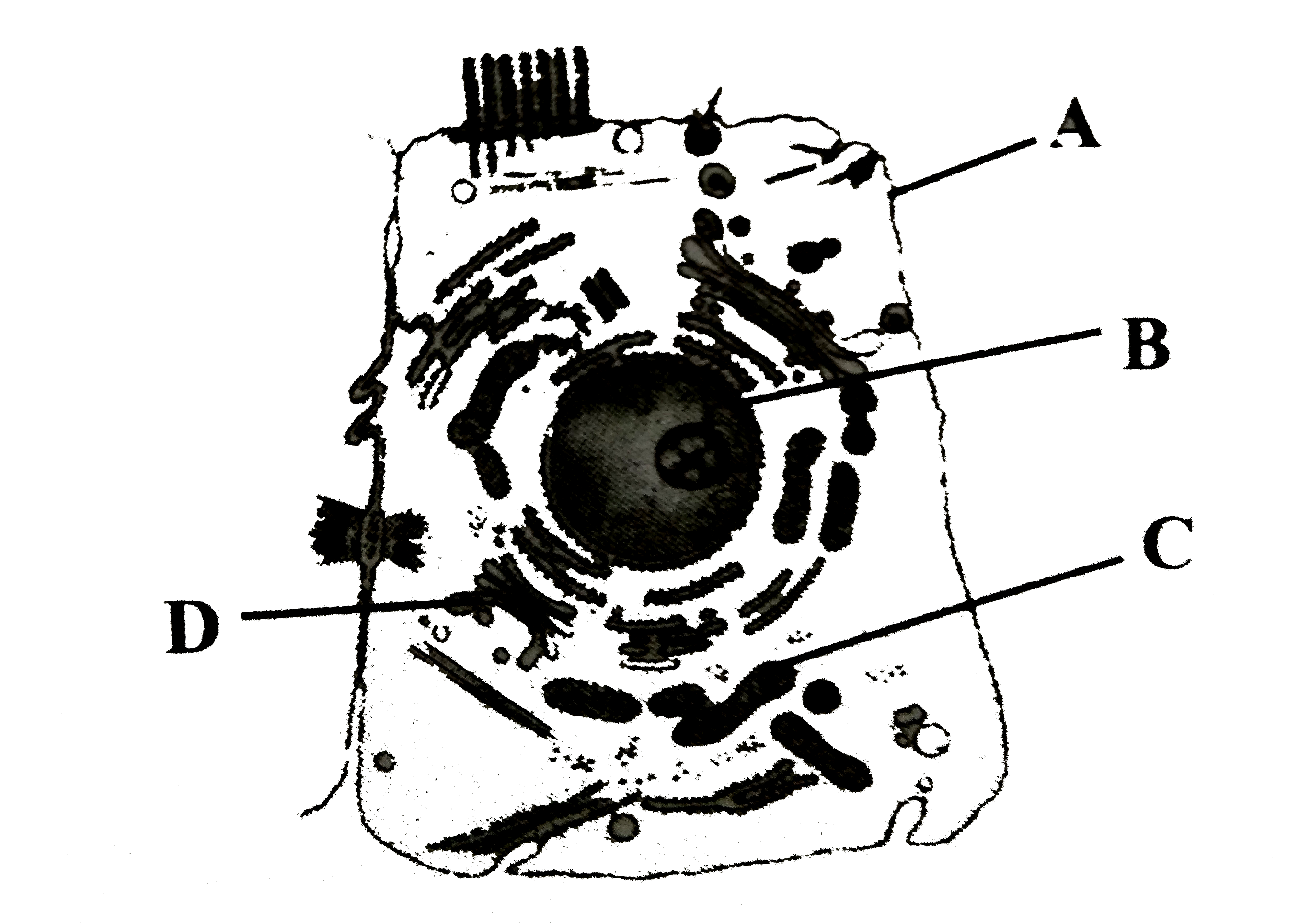 01:12View Solution
01:12View SolutionAccording to unit membrane structure, the thickness of plasma membrane is about
01:12View SolutionThe best material for the study of structure of cell membrane is
00:49View SolutionWhich chemical property is shared by all types of lipids forming the plasma membrane ?
01:14View SolutionThe lipid molecules present in plasma membrane have polar heads and non-polar tails (as shown in figure). Which option represents the correct arrangement of lipids in lipid bilayer ?
 01:52View Solution
01:52View SolutionA phospholipid molecule is amphipathic and produce two layers coming in contact with `H_(2)O`. The head of phospholipid molecule is
02:35View SolutionLipids are arranged within the membrane with
01:17View SolutionThe most abundant lipid in the cell membrane is
01:36View SolutionWhich of the best way to separate intact chloroplast from green leaves of angiospermic plant ?
01:12View SolutionCell recognition and adhesion are facilitated by components of plasma membrane. These components are generally
01:51View SolutionSelect the incorrect statement regarding the plasma membrane.
02:17View SolutionIdentify the components labelled as A, B, C and D in the given figure of cell membrane from the list (i) to (vii) given along with and select the correct option.

Compounds :
`{:("(i) Sugar","(ii) Protein"),("(iii), Lipid bilayer","(iv) Integral protein"),("(v) Cytoplasm","(vi) Cell wall"),("(vii) External protein",):}`
The correct matching of components is01:55View SolutionIntegral cell membrane proteins
01:49View SolutionThe latest model of cell membrane is the
01:30View SolutionAccording to the modern concept, cell membrane is
01:25View SolutionThe molecules in the membrane that limit its permeability are the
01:22View SolutionWho gave the lamellar or sandwich model of cell membrane ?
01:45View SolutionThe fluid mosaic model explains which aspects of a cell membrane ?
02:11View SolutionCell membrane is selective permeable. This means that it
01:23View SolutionMany molecules can move briefly across the membrane without any requirement of energy and special membrane proteins. This is called _______.
03:27View SolutionChoose the incorrect statement regarding cell membrane.
02:23View SolutionWhich of the following is an energy dependent process ?
01:28View SolutionThe function of intracellular membrane is not to
01:58View SolutionIf you remove the cell wall from a plant cell and place it into a drop of water
05:44View SolutionContinuity of cytoplasm from cell is maintained through cytoplasmic connection in plants called
04:10View SolutionDye injected into a plant cell might be able to enter an adjacent cell through
01:17View SolutionWhich organelle is not a part of the endomembrane system ?
04:47View SolutionA cell, which is very active in the synthesis and secretion of proteins, would be expected to have
05:27View SolutionThe cell organelle involved in the glycosylation of proteins is
01:25View Solution_________ isdirectly connected to the outer nuclear membrane.
04:36View SolutionP and Q are the major sites for the synthesis of _________, __________ respectively.
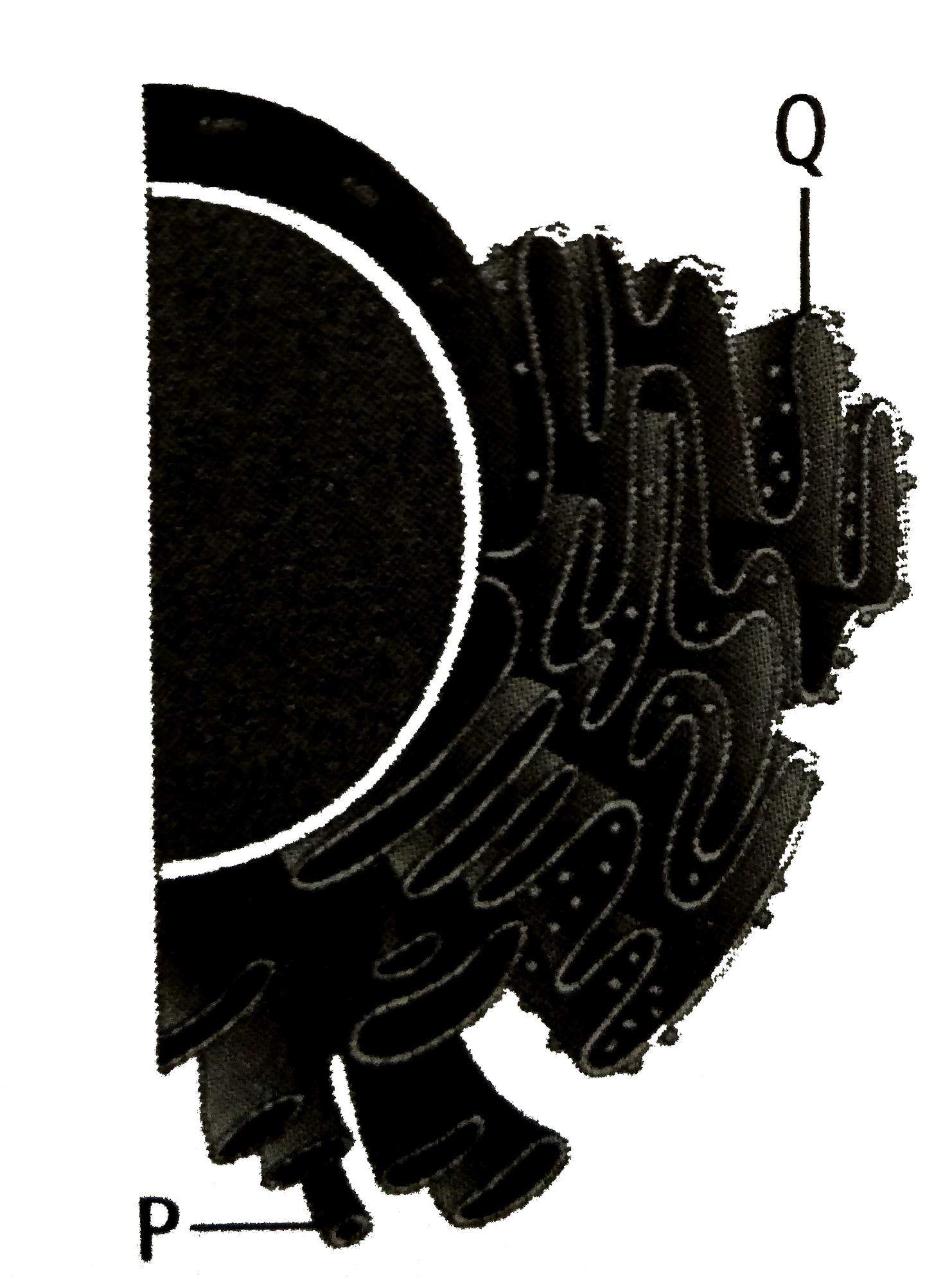 05:08View Solution
05:08View SolutionMechanical support, enzyme circulation, protein synthesis and detoxification of durgus are the function of
06:51View SolutionSmooth endoplasmic recticulum is well developed in the cells which synthesise
01:21View SolutionWhich organelle helps in the synthesis of lipids, chloesterol, steroids and visual pigments in epithelial cells of retina ?
01:20View SolutionWhich group of organelles is involved in synthesis of substances needed by cell ?
03:26View SolutionWhich of the following cell organelles are named after the name of its discoverer ?
01:25View SolutionSelect the option with correct labelling of given structure of Golgi apparatus.
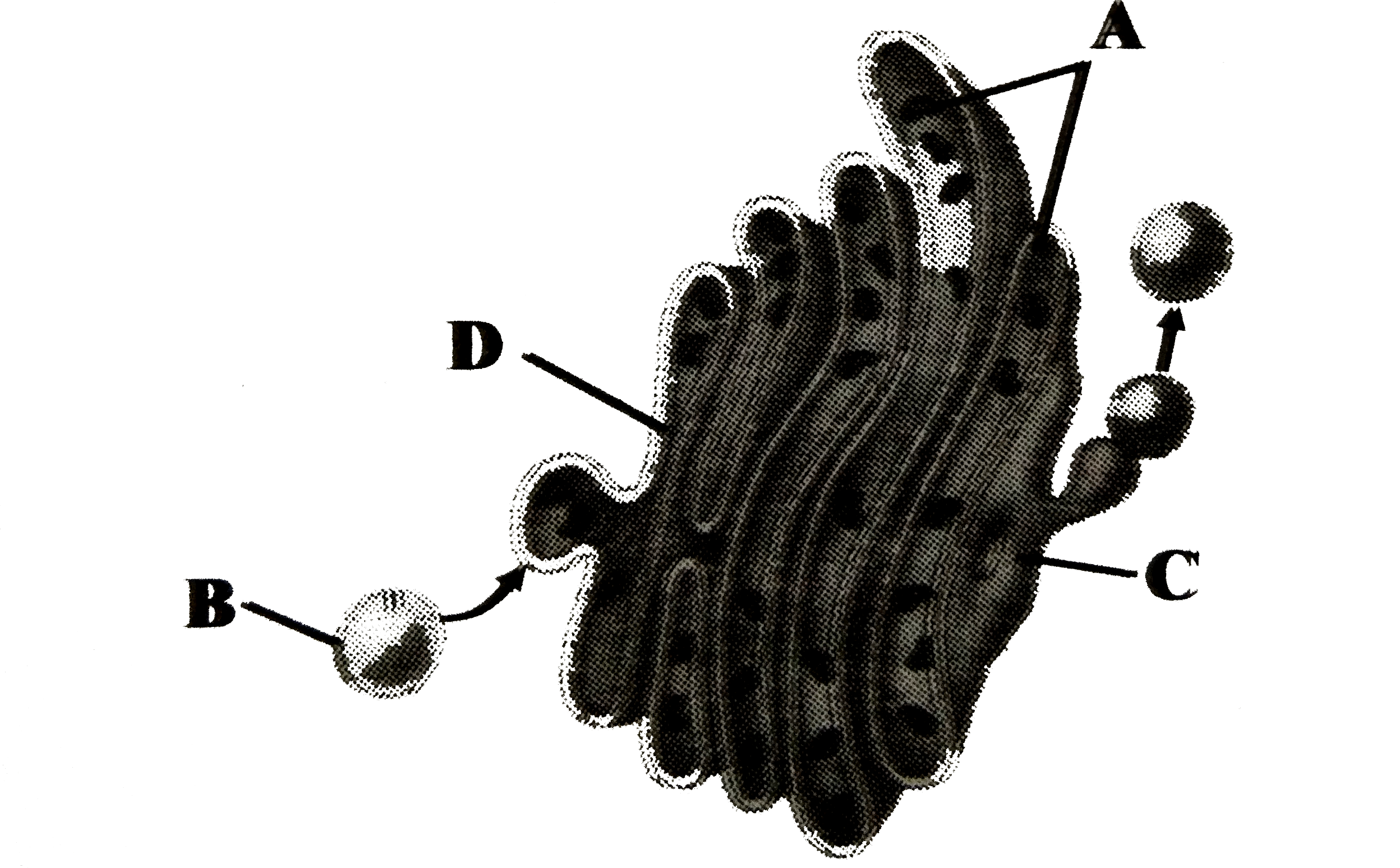 02:50View Solution
02:50View SolutionThese are the densely stained reticular stuctures present near the nucleus, consisting of many flat, disc shaped cistemae of `0.5 - 1.0 mu m` diameter. These are
01:38View SolutionRead the given statements and select the correct option.
Statement 1 : The cistemae in Golgi complex have cis face and trans face.
Statement 2 : The cis face is also called forming face and trans face is also called maturing face.01:52View SolutionWhich of the these is not a function of Golgi apparatus ?
02:12View SolutionPacking of substances for export from the cell occurs in the
03:41View SolutionCells which are secretory in function have abundant
04:27View SolutionWhich of the following is correct for the origin of lysosome (L) ?
04:28View SolutionLysosmes are __________ vesicular structures formed by the process of packaging in the _________.
03:51View SolutionWhich one of the mis-matched pair ?
01:08View SolutionLysosomes are the reservoirs (store houses) of
02:44View SolutionWhich of the following represents the features of lysosomes ?
03:43View SolutionCell organelle responsible for autolysis is
02:35View SolutionAs they release hydrolase that digest old and damaged cells, the term suicide bags is aptly used by cell biologists for
02:22View SolutionHow does a cell rid itself of defective or malfunctioning organelles ?
03:38View SolutionMatch column I with column II and select the correct option from the codes given below.
`{:(,"Column I",,"Column II"),(A.,"RER",(i),"Intracellular and extracellular digestion"),(B.,"SER",(ii),"Lipid synthesis"),(C.,"Golgi complex",(iii),"Protein synthesis and secretion"),(D.,"Lysosomes",(iv),"Moves materials out of the cell"):}`03:33View SolutionWhich of the following statements regarding sphaerosomes is not correct ?
02:17View SolutionRead the given statements regarding a cell organelle.
(i) It contains water, sap, excretory products and other unwanted materials.
(ii) It is bounded by a single membrane called tonoplast.
(iii) In plant cells, it can occupy upto 90 % of cellular volume.
(iv) Its contents form cell sap.
(v) It maintains turgor pressure.
The above features are attributed to02:57View SolutionWho coined the term for the given figure ?
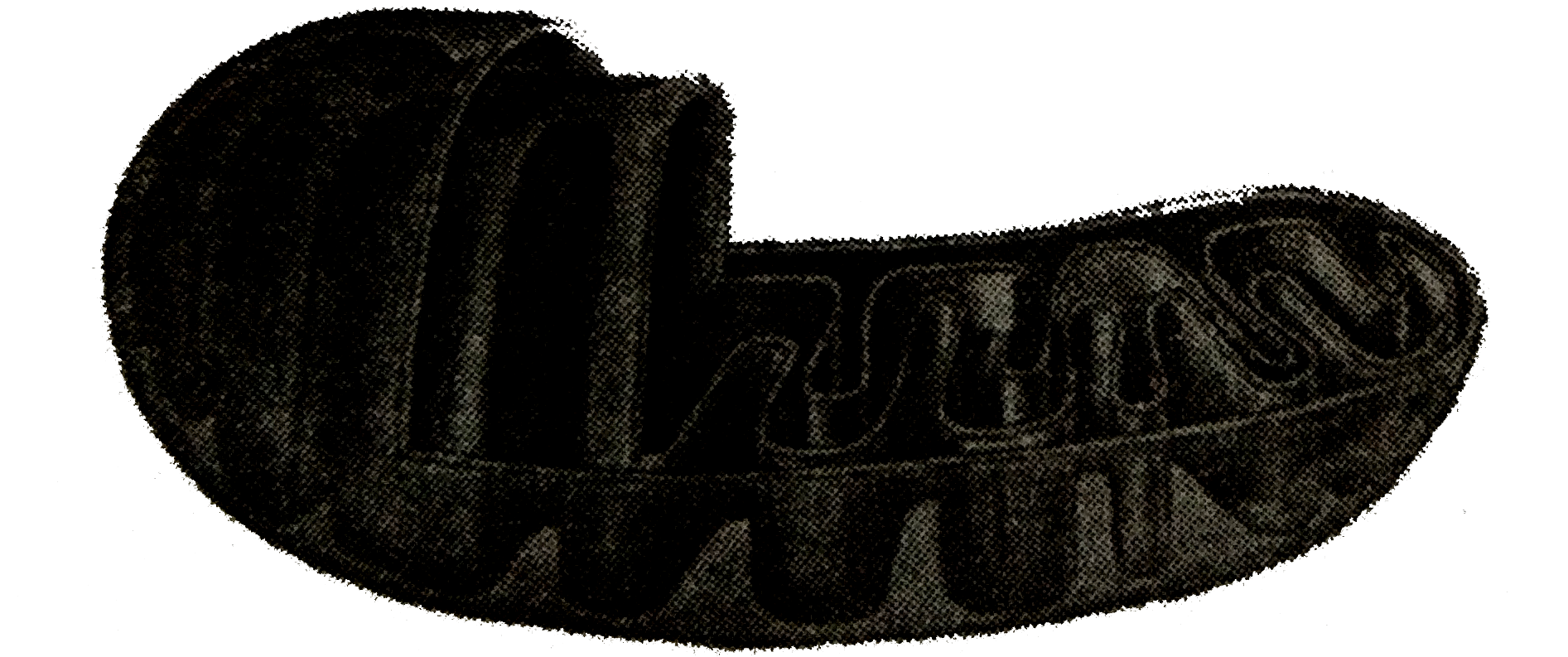 01:22View Solution
01:22View SolutionIn which of the following parts of mitochondria succinic dehydrogenase enzyme is located ?
02:20View SolutionWhich of the following observations most strongly support the view that mitochondria contain transport enzymes aggregated into compact association ?
03:10View SolutionStudy the following statements regarding mitochondria and select the correct ones.
These are the sites of aerobic respiration.
(ii) Matrix contains single, circular ds DNA molecule, a few RNA molecules, 70S ribosomes.
(iii) Mitochondria divide by fission.
(iv) Mitrochondria are fully-autonomous.03:37View SolutionWhich of the following statements is incorrect ?
03:08View SolutionAll plastids have essentially the same structure because
02:23View SolutionBright colour of petals is due to the presence of
01:36View SolutionMatch column I with column II and select the correct option from the codes given below.
`{:(,"Column I",,"Column II"),(A.,"Chloroplasts",(i),"Colourless plastids"),(B.,"Chromoplasts",(ii),"Yellow, orange or red coloured plastids"),(C.,"Leucoplasts",(iii),"Green plastids"):}`01:25View SolutionWhich of the following is the correct match ?
01:45View SolutionAmyloplasts, elaioplasts and aleuroplasts belong to ________ category of plastids.
01:43View SolutionSelect the incorrect pair.
02:24View SolutionRead the given statements.
(i) Flat membranous sacs in stroma of chloroplasts
(ii) Infoldings in mitochondria
(iii) Disc shaped sacs in Golgi apparatus
Select the correct option as per the codes given above.01:51View SolutionMatch column I with column II and select the correct option from the codes given below.
`{:(,"Column I",,"Column II"),(A.,"Dictyosomes",(i),"Storage"),(B.,"Mitochondria",(ii),"Photosynthesis"),(C.,"Vacuoles",(iv),"Transport"),(D.,"Grana",(iv),"Secretion"),(,,(v),"Respiration"):}`01:33View SolutionIdentify A and B in the given figure and select the correct option.
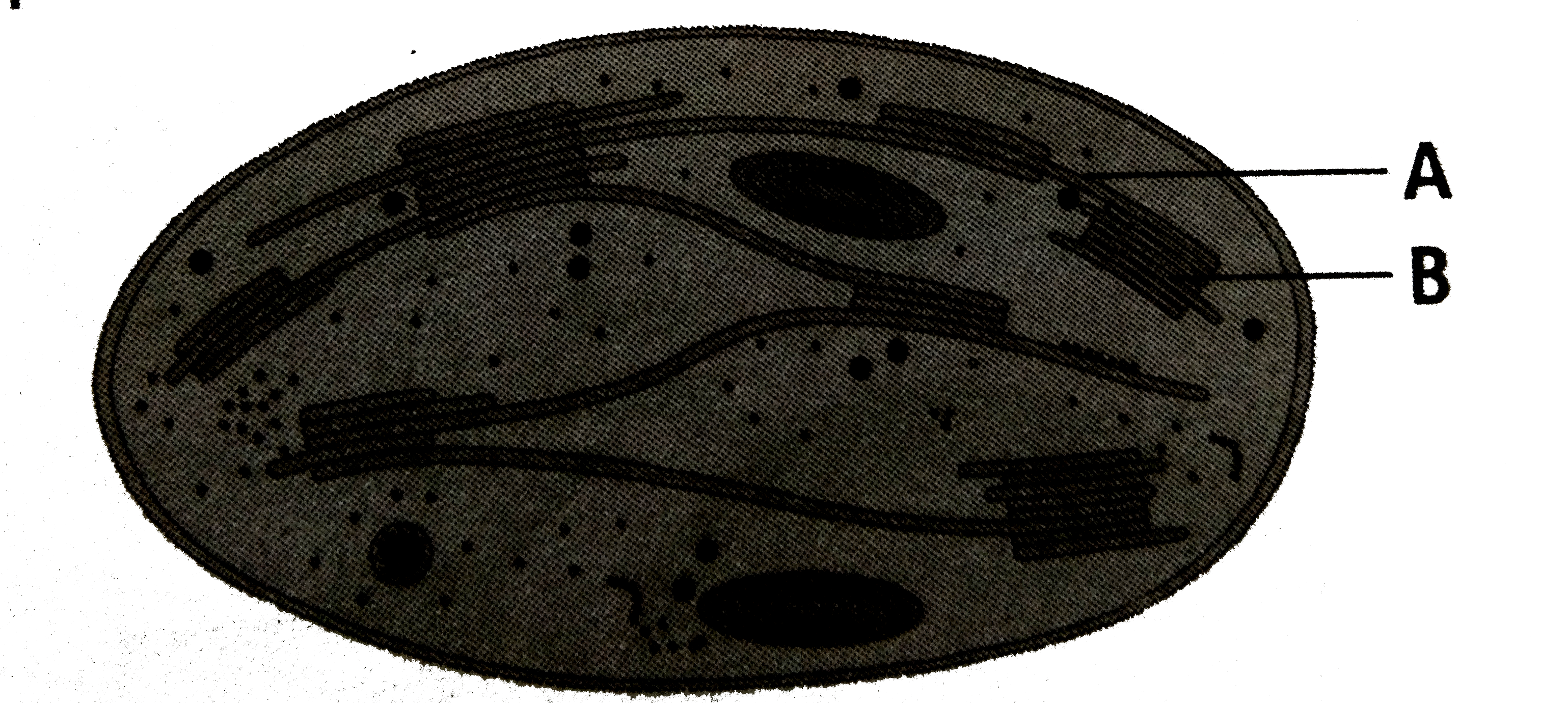 01:56View Solution
01:56View SolutionIn chloroplasts, chlorophyll is presents in the
01:32View SolutionExtranuclear inheritance is due to the presence of genes in
01:26View SolutionRead the given statements and select the correct option.
Statement 1 : Chloroplast and mitochondria are semiautonomous bondies.
Statement 2 : Chloroplast and mitochondria have their own DNA and protein synthesising machinery.01:58View Solution_________ are granular structures first observed under electron microscope as dense particles by _______ (1955).
01:36View SolutionRibosomes are composed of
01:01View SolutionRibosomes of the cytoplasm, chloroplast and mitochondrion are respectively
01:20View SolutionWhich of the following is correct for the given structure ?
 02:03View Solution
02:03View SolutionThe core of a cilium or flagellum composed of microtublues and their associated proteins is called
01:28View SolutionAn organelle with an internal cross-section showing characteristic ''9+2'' array is the
01:35View SolutionWhich of the following is correct regarding the structure of a section of cilia / flagella ?
01:42View Solution
Cell - The Unit Of Life questions and complete solutions for chapter CELL - THE UNIT OF LIFE of MTG BIOLOGY (HINGLISH) of Class 11
